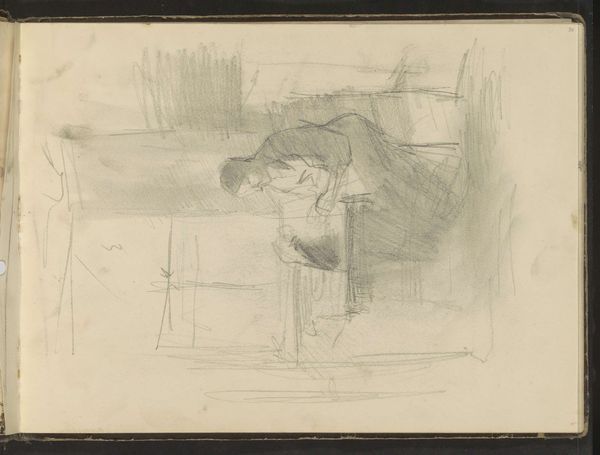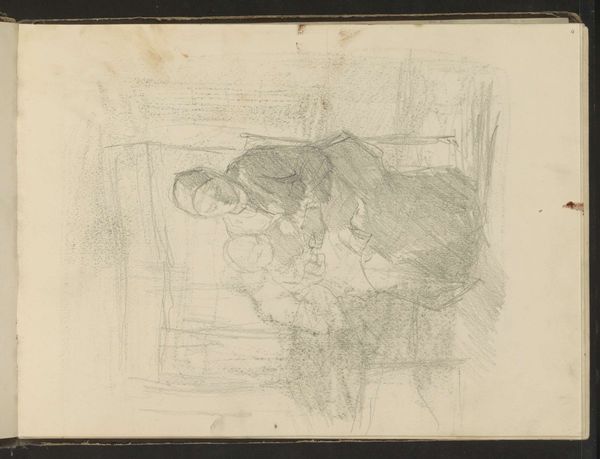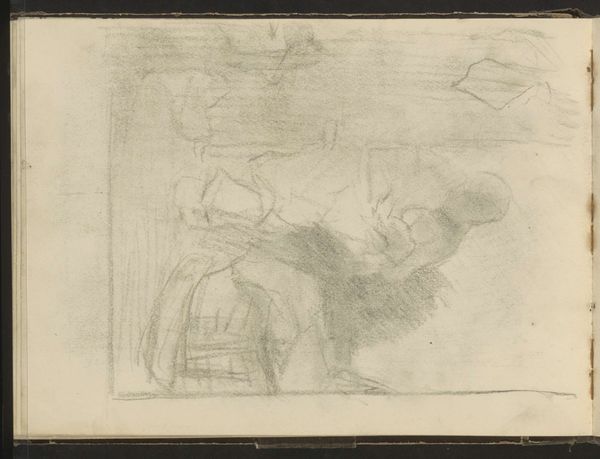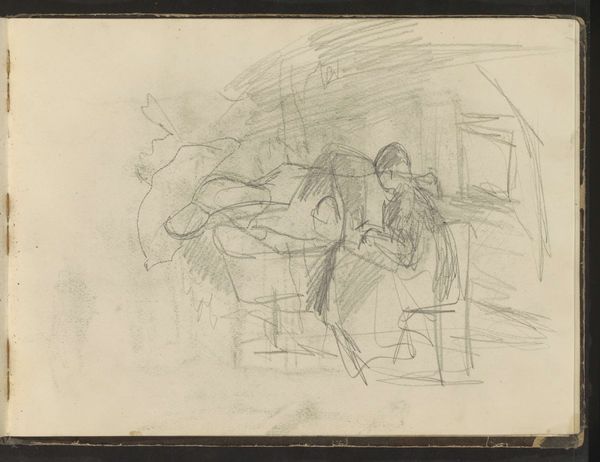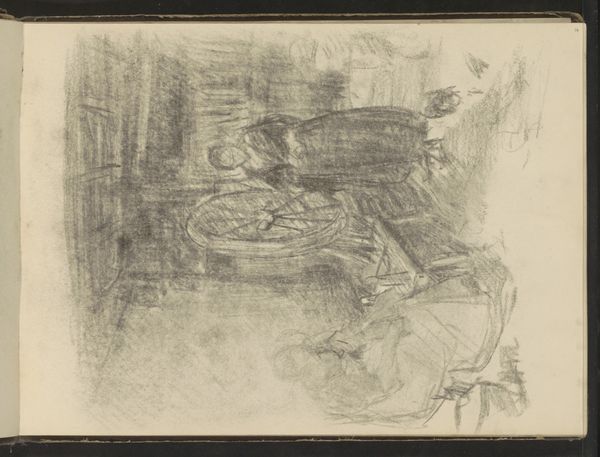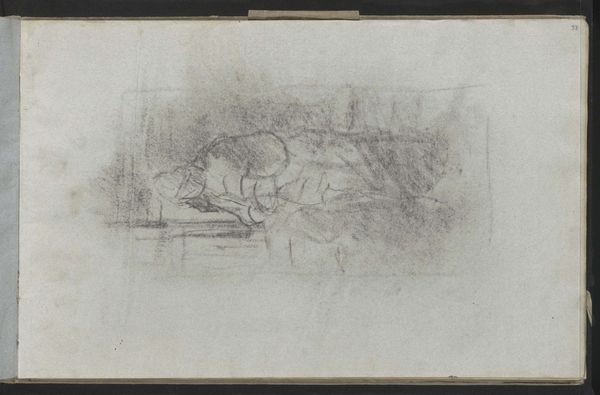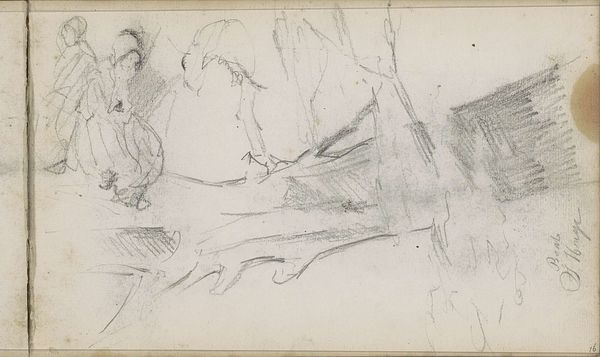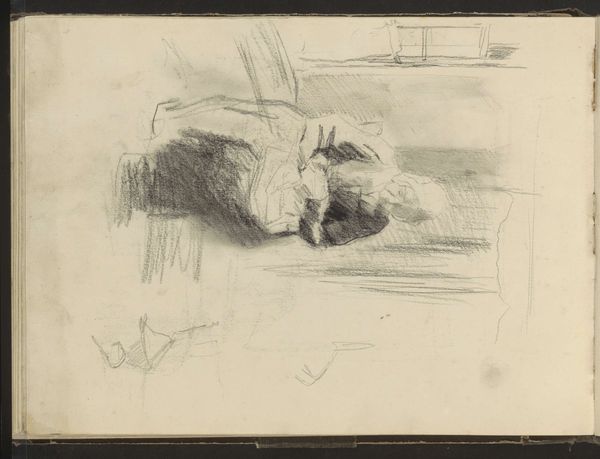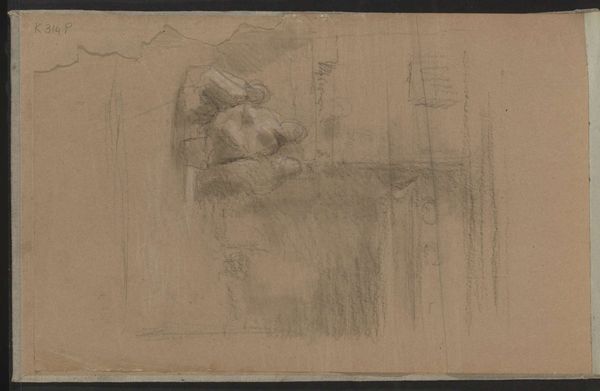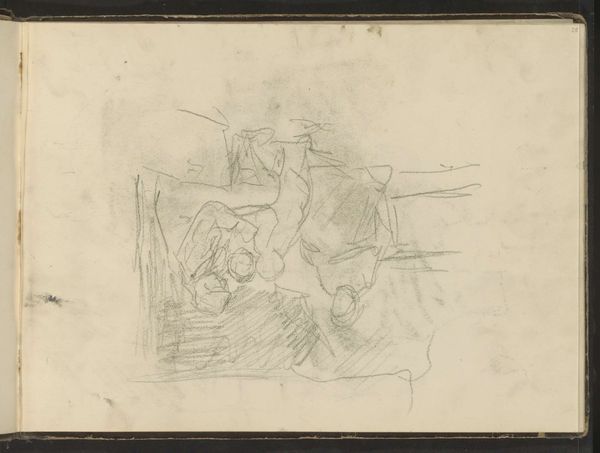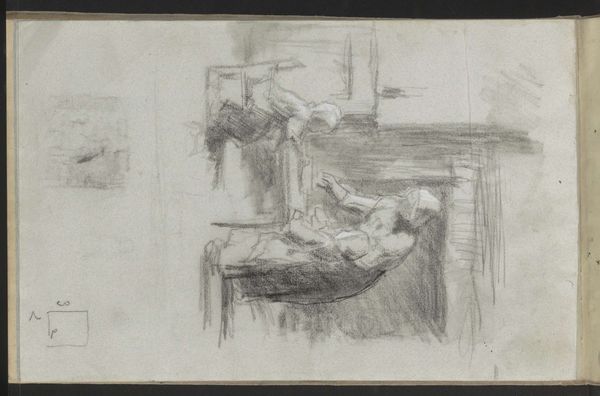
drawing, paper, impasto, pencil
#
portrait
#
drawing
#
amateur sketch
#
aged paper
#
toned paper
#
light pencil work
#
sketch book
#
incomplete sketchy
#
paper
#
personal sketchbook
#
impasto
#
pen-ink sketch
#
pencil
#
sketchbook drawing
#
genre-painting
#
sketchbook art
#
realism
Copyright: Rijks Museum: Open Domain
Editor: This is "Interior with a Woman Sitting Beside a Cradle," a pencil drawing by Albert Neuhuys, likely created sometime between 1854 and 1914. It has a really intimate feel to it, almost like a glimpse into a private moment. What stands out to you most in this piece? Curator: It's the perceived intimacy, as you mentioned, that’s really striking. Consider the context: genre paintings depicting everyday life were gaining popularity, offering a window into the lives of ordinary people, particularly the rural working class. How might an image like this function within a broader social understanding of motherhood and domesticity at the time? Editor: I suppose it reinforces the image of women being tied to the home. It feels almost… confining? Curator: Exactly. This image, while seemingly tender, also reflects and reinforces societal expectations about women's roles. Neuhuys, associated with the Hague School, often depicted peasant life. These artists sought authenticity, but whose authenticity were they portraying? And for whom? Consider the viewers of these images – largely urban, middle-class audiences. What did they expect or want to see in these scenes of rural life? Editor: So, it’s not just a simple depiction, but a carefully constructed image catering to specific social expectations. Was Neuhuys intentionally promoting a specific agenda? Curator: That's the crucial question, isn't it? Whether intentional or not, artists are always participating in a cultural conversation. Images like this contribute to shaping perceptions, sometimes reinforcing existing power structures, and occasionally challenging them. How might we read this image differently through a contemporary lens, considering evolving views on gender and domesticity? Editor: This has definitely made me rethink the way I initially perceived the drawing. It's not just a sweet domestic scene; it's loaded with historical and social context. Curator: Precisely. Examining the social and cultural context allows us to unpack the layers of meaning embedded within even seemingly simple images.
Comments
No comments
Be the first to comment and join the conversation on the ultimate creative platform.
